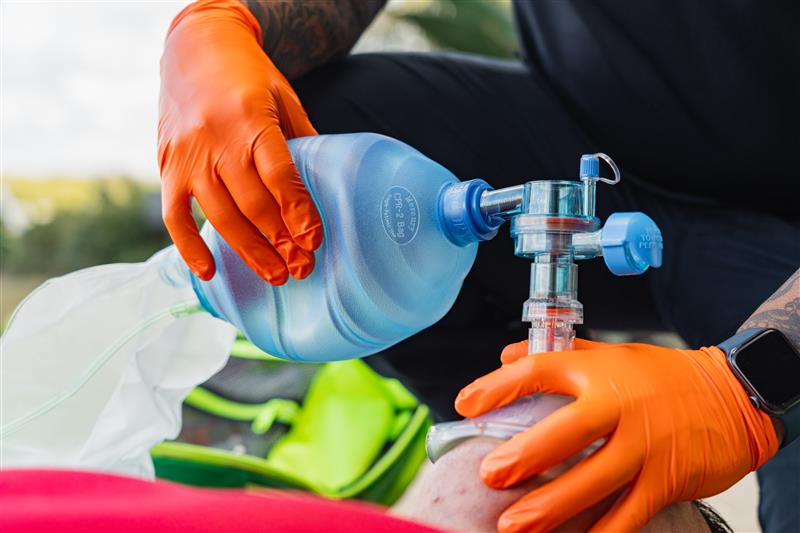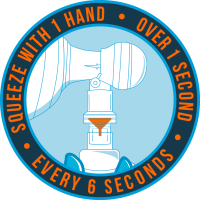Dr. Arthur Slutsky is one of the world’s most recognized experts in respiratory mechanics, critical care, and mechanical ventilation. His career has bridged biomedical engineering and medicine, shaping the global understanding of positive pressure ventilation (PPV).
- Positions: Professor Emeritus, University of Toronto; Former VP of Research, St. Michael’s Hospital. Chief Scientific Officer, SafeBVM
- Achievements: Hundreds of peer-reviewed articles, major contributions to ventilator-induced lung injury (VILI) prevention, Canadian Medical Hall of Fame inductee (2025).
- Impact: His research has shaped how clinicians worldwide manage acute respiratory failure in ICU and prehospital settings.
Quick Summary / Key Takeaways
If you remember only five things from Dr. Slutsky’s perspective, make it these:
- Positive pressure ventilation is life-saving but inherently unnatural — forcing gas into the lungs comes with risks.
- Excessive pressure or volume can rapidly cause hemodynamic compromise and lead to ventilator-induced lung injury (VILI).
- Manual ventilation carries the greatest risk due to lack of feedback and variability in provider technique.
- Overventilation and hyperventilation worsen outcomes, particularly in traumatic brain injury (TBI) and cardiac arrest.
- Tools that limit flow or provide real-time feedback (tidal volume, rate, pressure) are critical to improving the safety and efficacy of manual ventilation.
Historical Context
- Origins: Positive pressure ventilation emerged centuries ago, with primitive bellows used to push gas into patients. Bag ventilation was used to great success during the polio epidemic, and PPV replaced negative pressure systems like the “iron lung.”
- Modern Role: Today, PPV is foundational in ICU care, operating rooms, and prehospital resuscitation — from ventilators to bag-valve-masks.
Key Evidence & Guidelines
- Tidal Volumes: Standard target is 6–8 mL/kg Predicted Body Weight (PBW) (≈400–600 mL for the average adult). Manual BVM often exceeds this. [PBW is calculated using sex and height of the patient)
- Hemodynamic Impact: High intrathoracic pressures impair venous return, lowering cardiac output.
- Manual Variability: Simulation studies consistently show wide variations in tidal volumes and rates, when there is no feedback.
Underventilation Risk: Underventilation can also occur, especially during bag-valve-mask ventilation, due to poor mask seal — leading to insufficient oxygen delivery. - Technology: Flow-limiting devices and feedback monitors help improve the quality of manual ventilation by minimizing over- and under-ventilation.
Overventilation & Its Effects
Physiologic Consequences:
- ↑ Intrathoracic pressure → ↓ venous return → hypotension, reduced cardiac output.
- Alveolar overdistension → VILI, barotrauma, pneumothorax.
- Hypocapnia → cerebral vasoconstriction → worsened TBI outcomes.
Training Recommendations
- High-frequency, hands-on practice (quarterly, not just during certification).
- Use real-time feedback on pressure, volume, and rate.
- Simulate difficult scenarios (mask leaks, stiff lungs, obstructed airways).
- Emphasize two-person BVM for better mask seal.
Table of Contents
SECTION 1: Foundations of Positive Pressure Ventilation
1. What is positive pressure ventilation, and why is it critical?
2. What are the different types of PPV, and when is each used?
SECTION 2: Errors & Complications
3. What are the risks of improper PPV?
4. How common is over-ventilation or over-pressurization?
SECTION 3: Manual vs Mechanical PPV
5. How does manual PPV compare to mechanical ventilation?
6. Do standard BVMs deliver safe tidal volumes?
SECTION 4: Variability & Training
7. Why do trained providers still struggle with PPV?
8. How should training evolve to reduce preventable harm?
SECTION 5: Tools & Innovations
9. What tools or technologies can improve PPV safety?
SECTION 1: Foundations of Positive Pressure Ventilation
FAQ 1: What is positive pressure ventilation, and why is it critical?
Positive pressure ventilation (PPV) refers to pushing gas into the lungs at a pressure above atmospheric. Unlike spontaneous breathing (negative pressure), PPV forces airflow into the airways and alveoli. This can be done via bag-valve-mask (manual) or mechanical ventilator.
Real Results: From primitive bellows to modern ventilators, PPV has evolved into a life-saving intervention for respiratory failure.
Takeaway: PPV is essential but inherently risky — success depends on careful control of pressures and volumes.
FAQ 2: What are the different types of PPV, and when is each used?
Modes include volume control, pressure control, pressure support, CPAP, and non-invasive ventilation (BiPAP). In-hospital care usually uses mechanical ventilators which are often triggered and synchronized with spontaneous breathing, while prehospital care (e.g., cardiac arrest) is purely manual.
Real Results: Non-invasive ventilation reduces mortality rates in COPD, while invasive PPV is standard in the ICU for many types of respiratory failure.
Takeaway: Mode selection depends on setting, patient condition, and resources.
SECTION 2: Errors & Complications
FAQ 3: What are the risks of improper PPV?
- Gastric insufflation → aspiration risk.
- Barotrauma → pneumothorax, alveolar rupture.
- VILI from overdistension.
- Hemodynamic compromise from increased intrathoracic pressure.
- Hyperventilation → hypocapnia, cerebral vasoconstriction, worsened TBI outcomes.
- Hypoventilation → especially with mask ventilation, associated with worsened OHCA outcomes
Real Results: EPIC TBI trials show avoiding hyperventilation is critical for survival and neuroprotection. Studies suggest that hypoventilation is associated with poorer outcomes in OHCA
Takeaway: Both excessive pressures and volumes carry life-threatening risks, as can hypoventilation.
FAQ 4: How common is overventilation or overpressurization?
Very common, especially in manual ventilation. Studies in TBI patients show worse outcomes with hyperventilation. Even trained providers frequently exceed safe volumes and rates under stress.
Real Results: Field data confirm high variability and frequent guideline deviation during resuscitation.
Takeaway: Overventilation remains a major, under-recognized threat.
SECTION 3: Manual vs Mechanical PPV
FAQ 5: How does manual PPV compare to mechanical ventilation?
Mechanical ventilation offers precise, consistent control of volume, pressure, and rate. Manual PPV is highly variable and prone to error, but often the only option in prehospital or emergency scenarios.
Real Results: In OHCA, Wang et al. (2018, JAMA) found no survival difference between early intubation and supraglottic airway — but outcomes depended on ventilation quality.
Takeaway: Manual PPV is indispensable in emergencies, but mechanical ventilation is safer when available, and used by trained individuals.
FAQ 6: Do standard BVMs deliver safe tidal volumes?
The issue is usually not the bag itself, but the human–bag combination. Standard adult BVMs can safely deliver target volumes, but under stress providers often over- or under-ventilate. Pediatric bags in adults increase under-ventilation risk.
Real Results: Simulation studies show providers frequently exceed target volumes without feedback. In one study use of a smaller adult bag was associated with worse outcomes.
Takeaway: Proper technique and tools are essential — not smaller bags.
SECTION 4: Variability & Training
FAQ 7: Why do trained providers still struggle with PPV?
- Infrequent use → skill decay.
- Mask seal difficulties (improper technique, beards, facial structure).
- Stress conditions impair performance.
- Patient variability (compliance, resistance).
Real Results: EMS providers may use BVMs fewer than 10 times/year, often in high-stress emergencies.
Takeaway: Training must be ongoing, scenario-based, and feedback-driven.
FAQ 8: How should training evolve to reduce preventable harm?
Quarterly hands-on sessions, real-time feedback tools, and scenario-based drills. Focus on both avoiding overventilation and managing under-ventilation risks.
Real Results: Feedback devices improve adherence to target volumes and rates in simulations.
Takeaway: High-frequency, feedback-based training is the best safeguard.
SECTION 5: Tools & Innovations
FAQ 9: What tools or technologies can improve manual ventilation safety?
- Real-time measurement of tidal volume, rate, and pressure.
- Capnography for exhaled CO₂ monitoring.
- Flow-limiting devices to prevent excessive pressure/flow, and to provide guidance to help prevent underventilation.
- BVM modifications (SMART bags, Sotair flow-limiting technology).
Real Results: Flow-limiting devices reduce overventilation and allow providers to approach safe thresholds with confidence, thus also helping to prevent under-ventilation.
Takeaway: Pairing skilled providers with modern safety tools transforms manual ventilation from guesswork into precision.
References
- Wang HE, Schmicker RH, Daya MR, et al. Effect of a strategy of initial laryngeal tube insertion vs endotracheal intubation on 72-hour survival in adults with out-of-hospital cardiac arrest: a randomized clinical trial. JAMA. 2018;320(8):769–778.
- Culbreth RE, Gardenhire DS. Manual bag valve mask ventilation performance among respiratory therapists. Heart Lung. 2021;50(3):471–475.
- EPIC Investigators. Impact of ventilation strategies on TBI outcomes. Ann Emerg Med. 2023.
- Idris AH. The importance of measuring ventilation during resuscitation. Resuscitation. 2022;177:41-42. doi:10.1016/j.resuscitation.2022.06.021
- Snyder BD, Van Dyke MR, Walker RG, et al. Association of small adult ventilation bags with return of spontaneous circulation in out of hospital cardiac arrest. Resuscitation. 2023;193:109991. doi:10.1016/j.resuscitation.2023.109991
- Justice JM, Slutsky AS, Stanford N, et al. Assessment of Ventilation Using Adult and Pediatric Manual Resuscitators in a Simulated Adult Patient. Respir Care. 2024;69(8):924-930. Published 2024 Jul 24. doi:10.4187/respcare.11588

